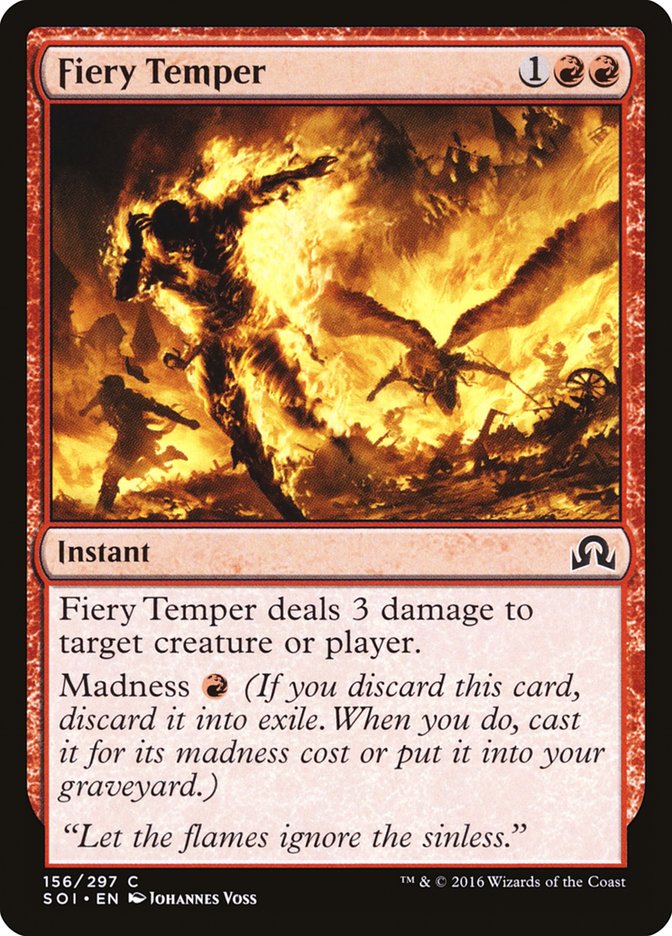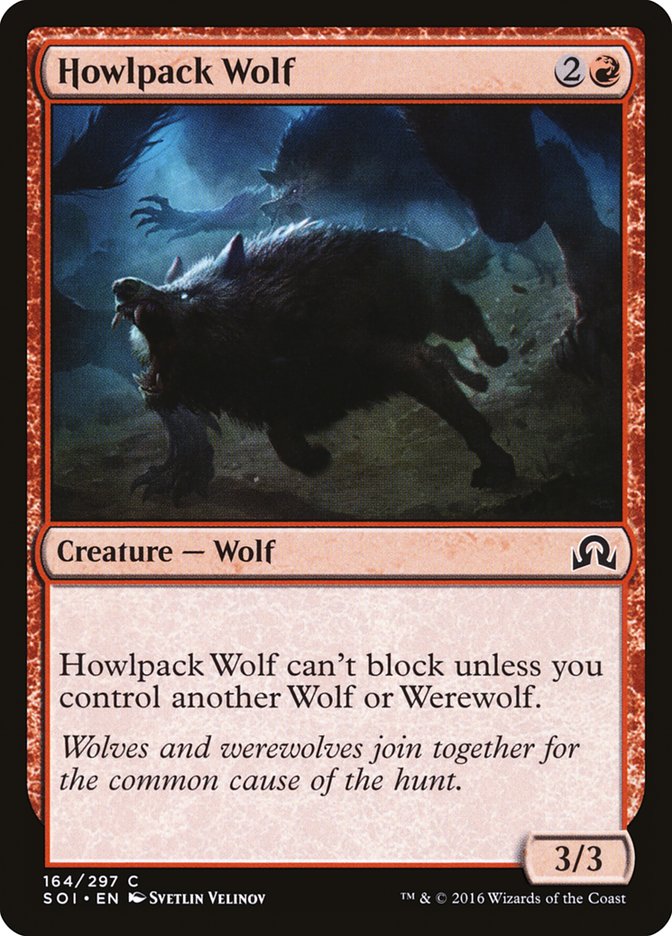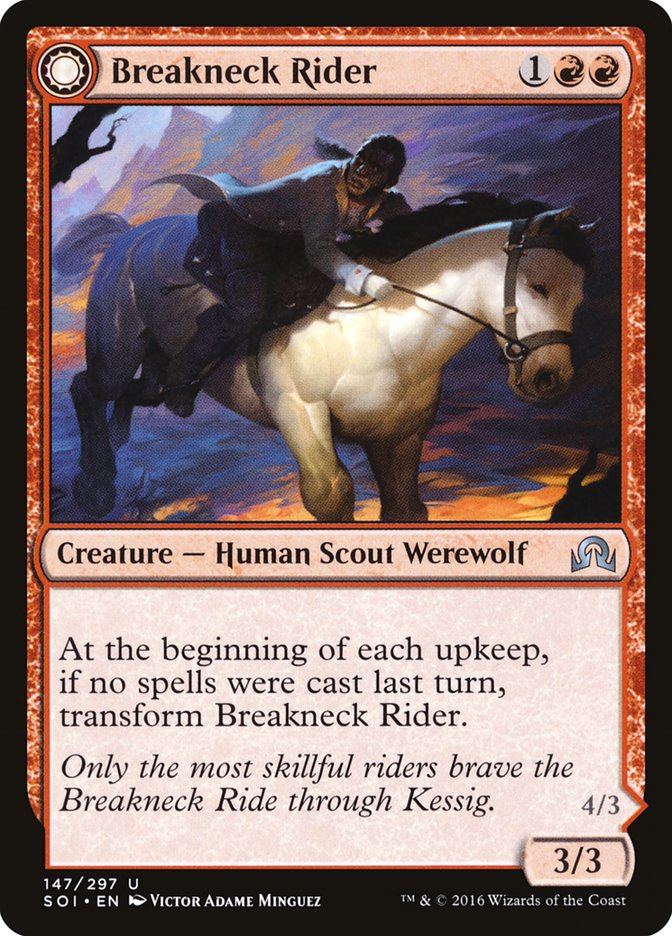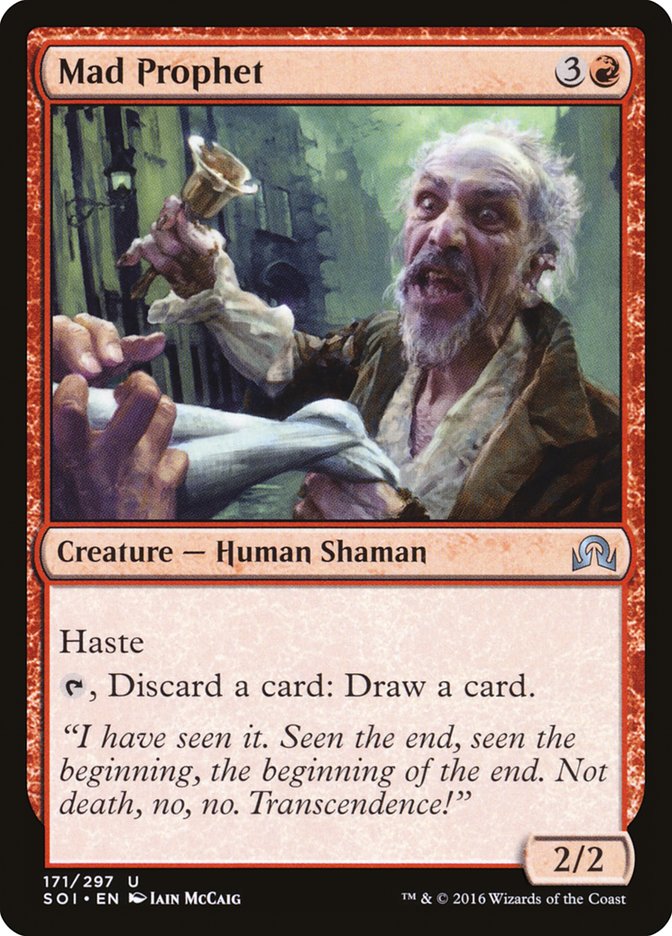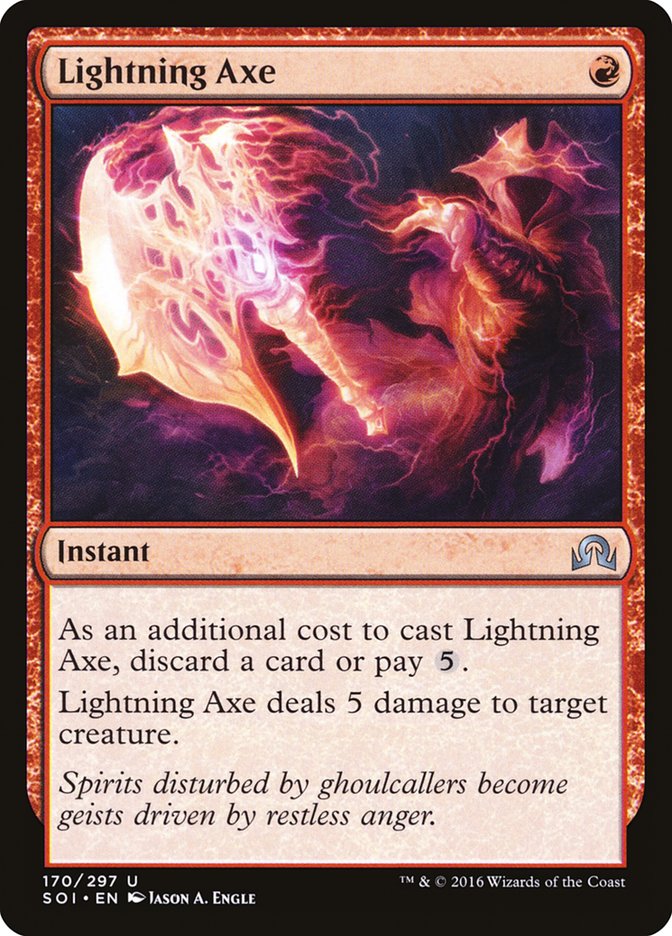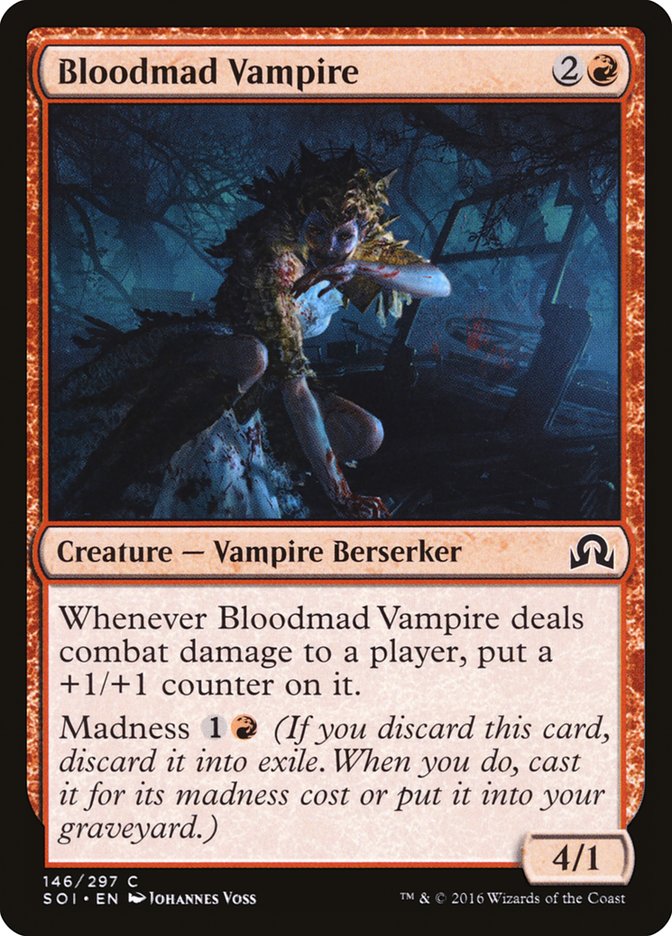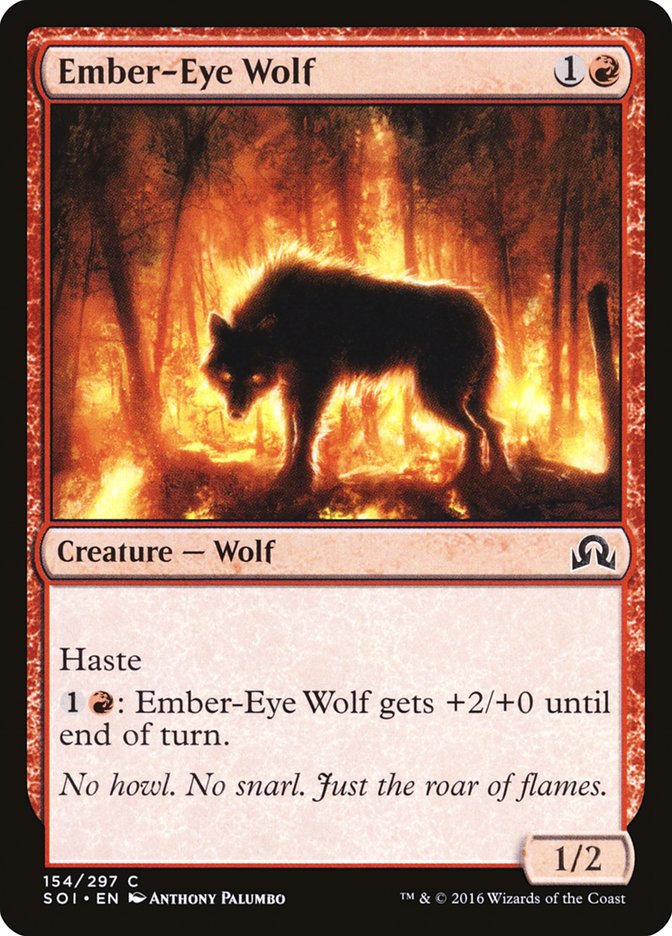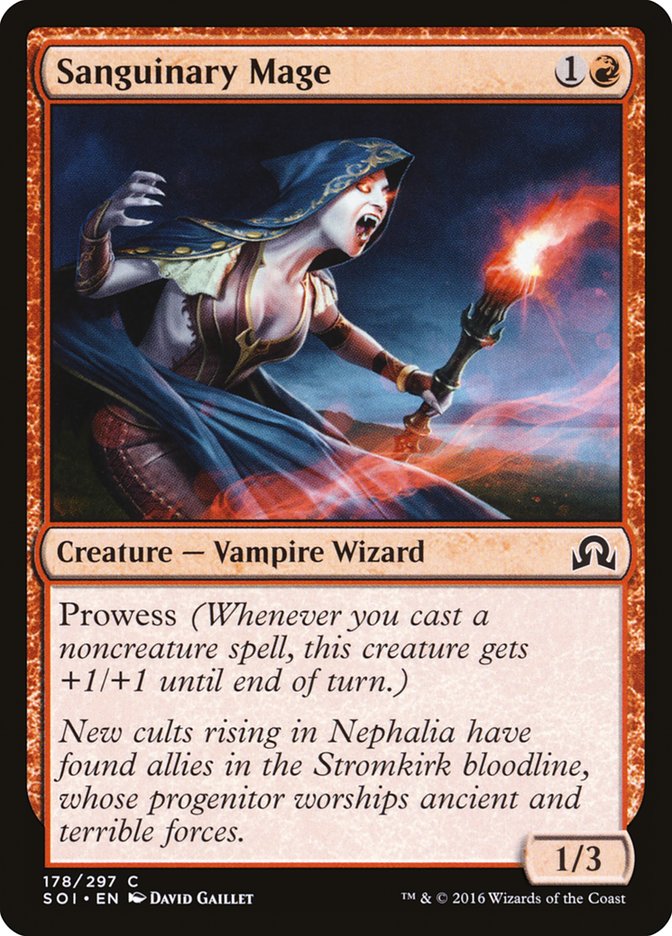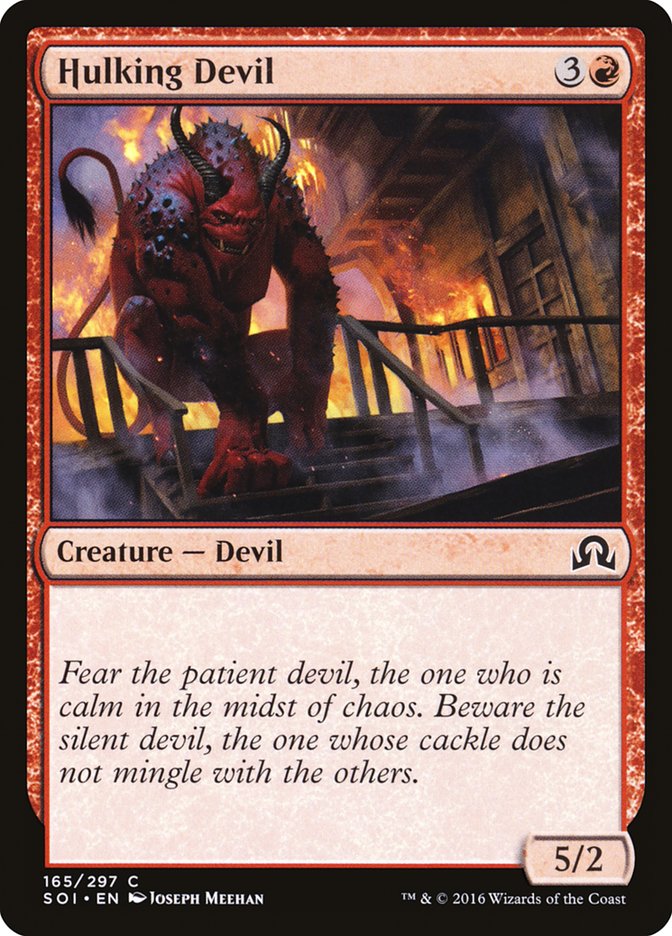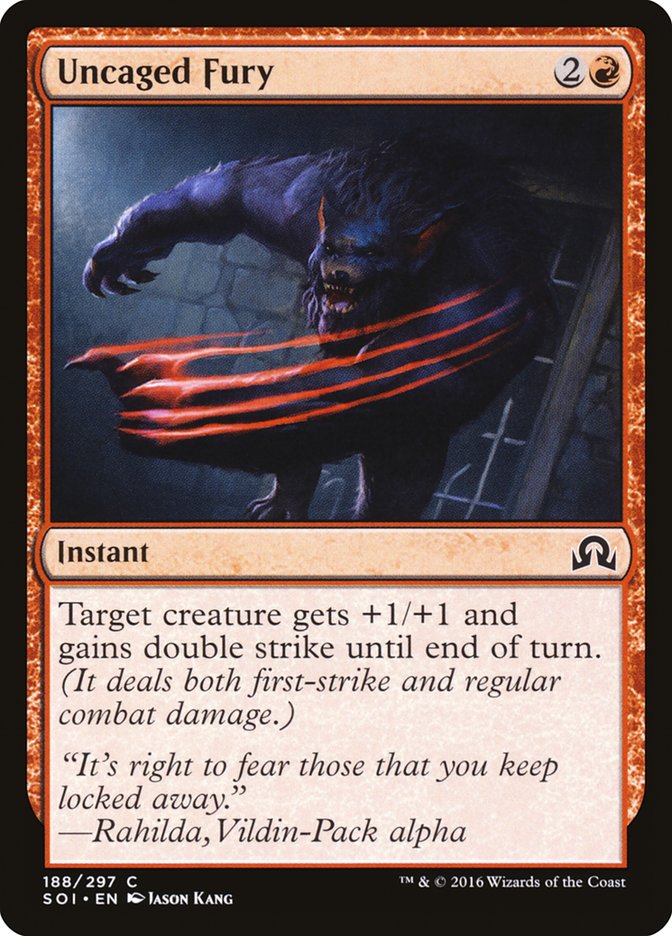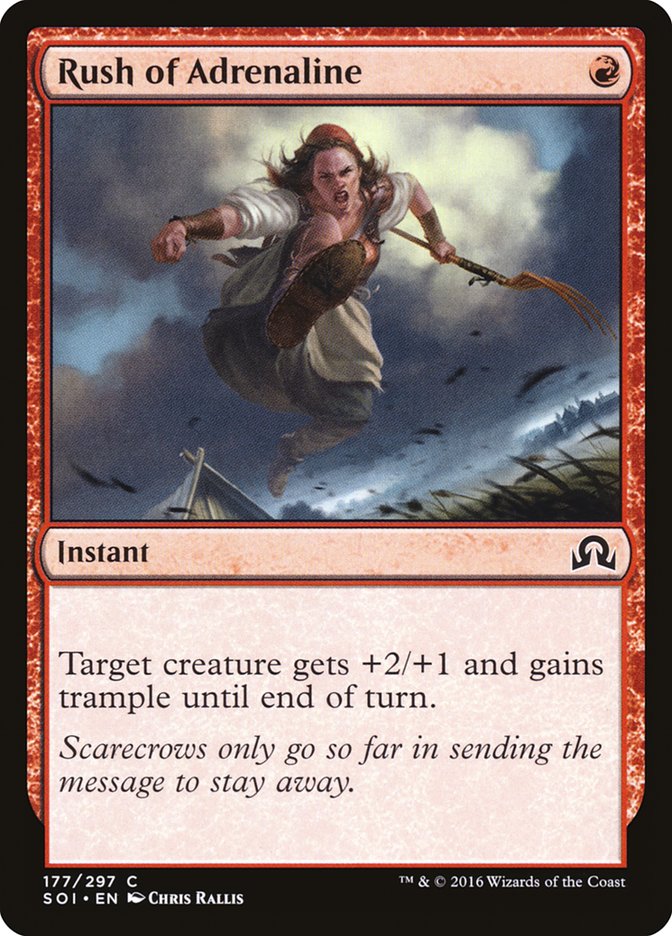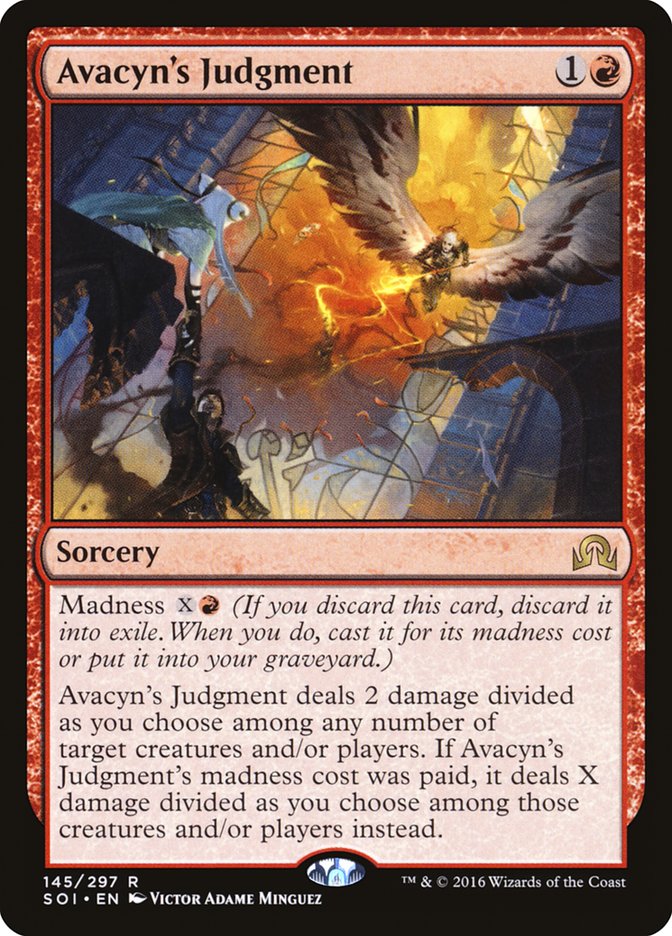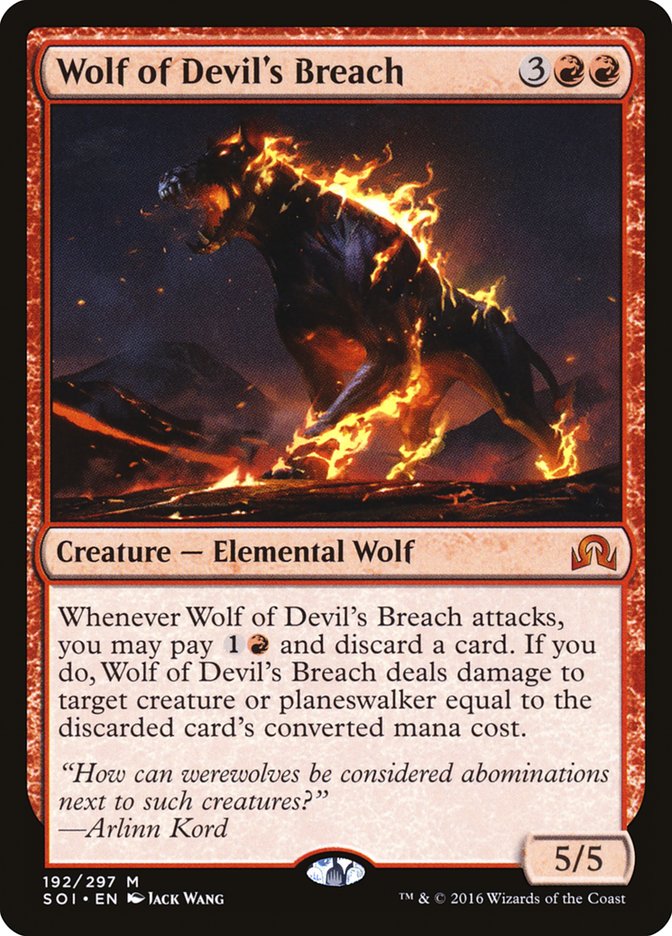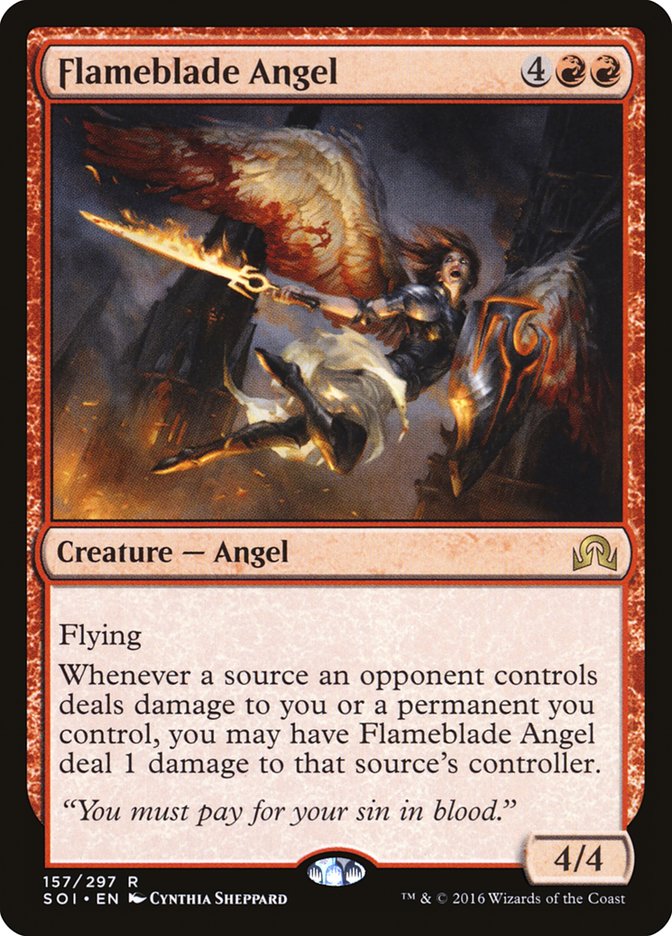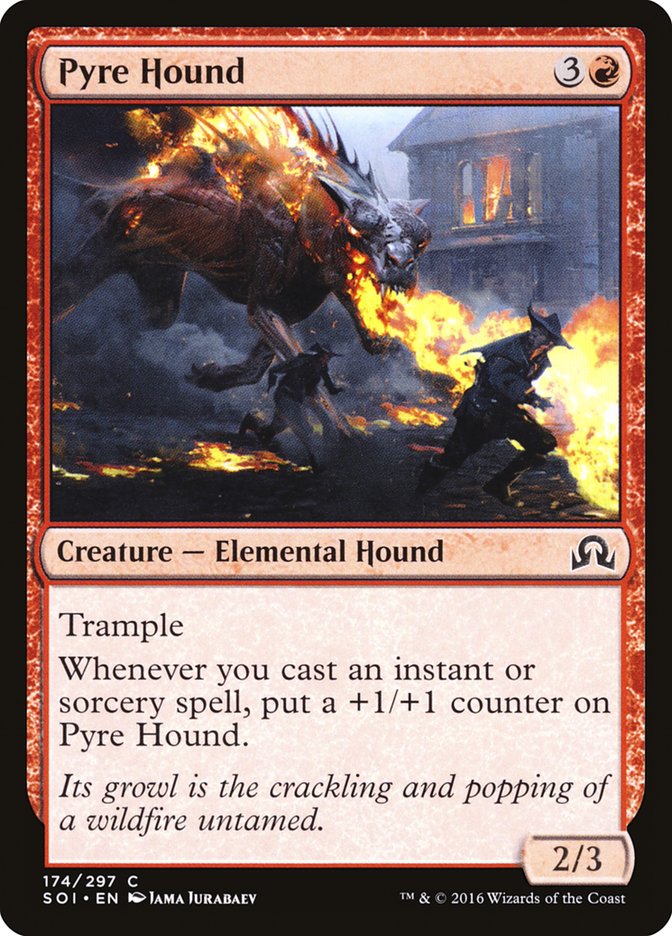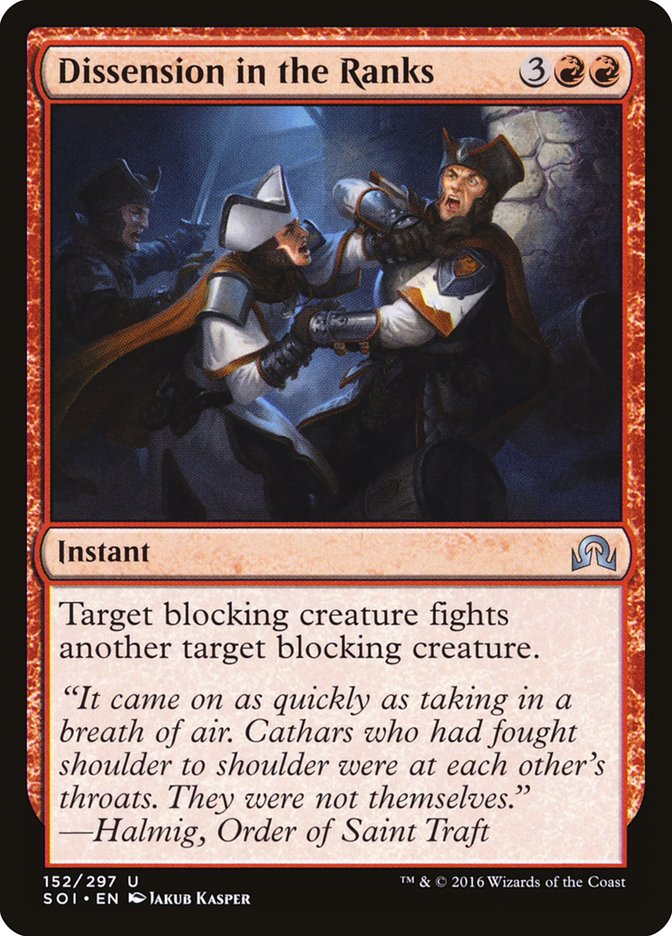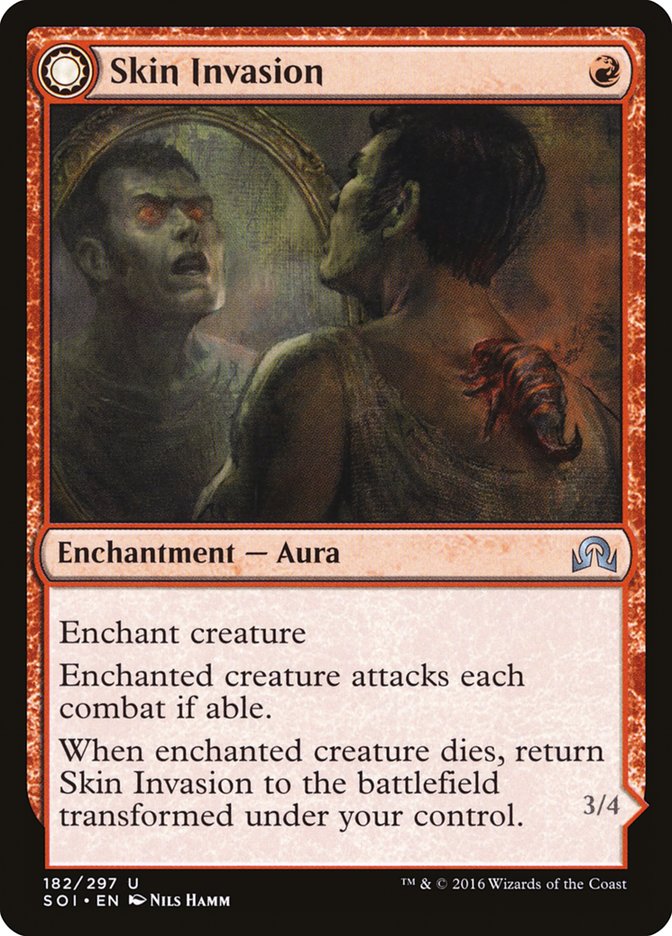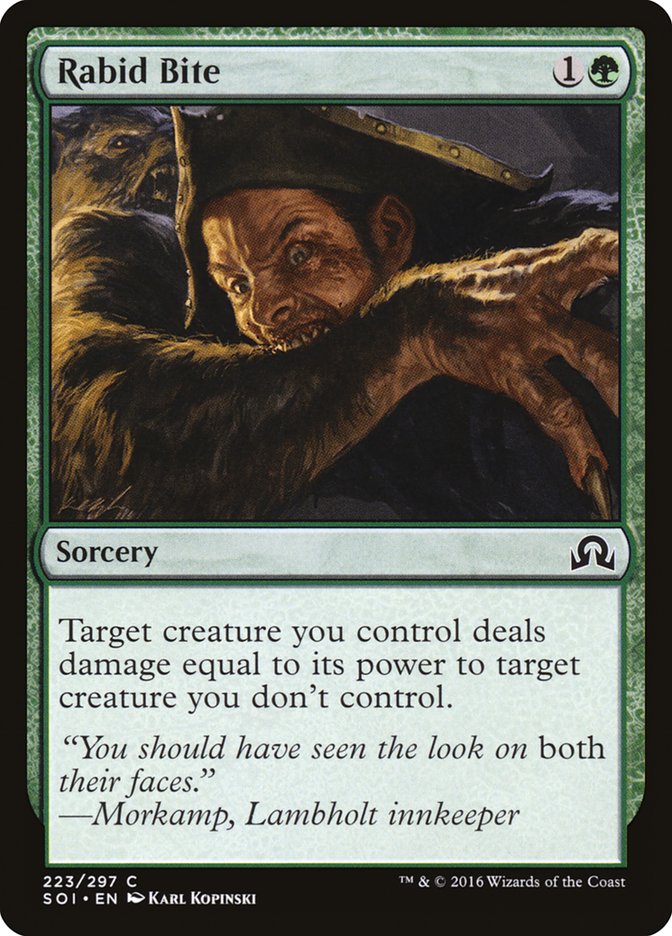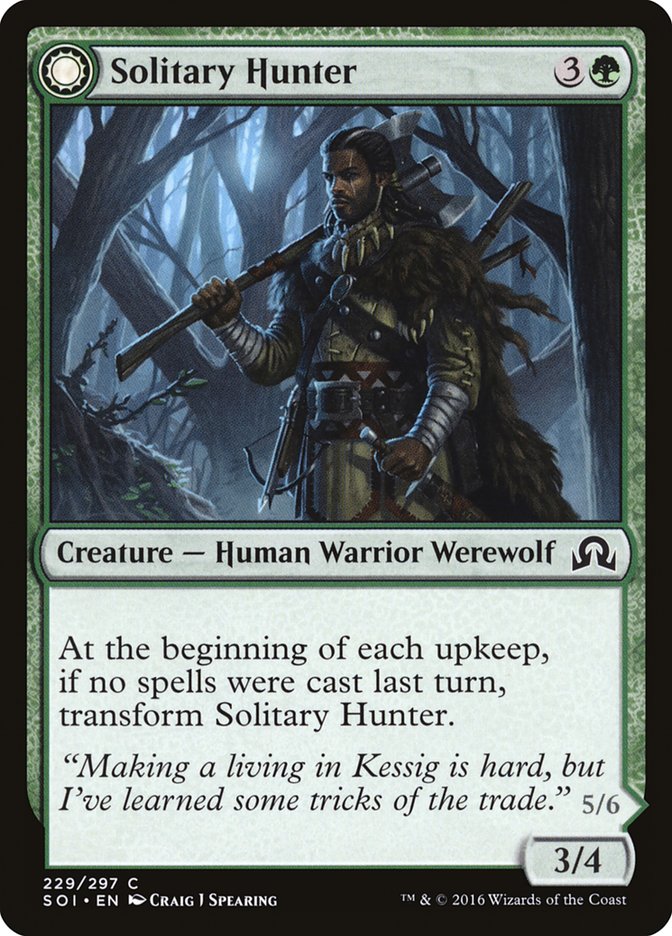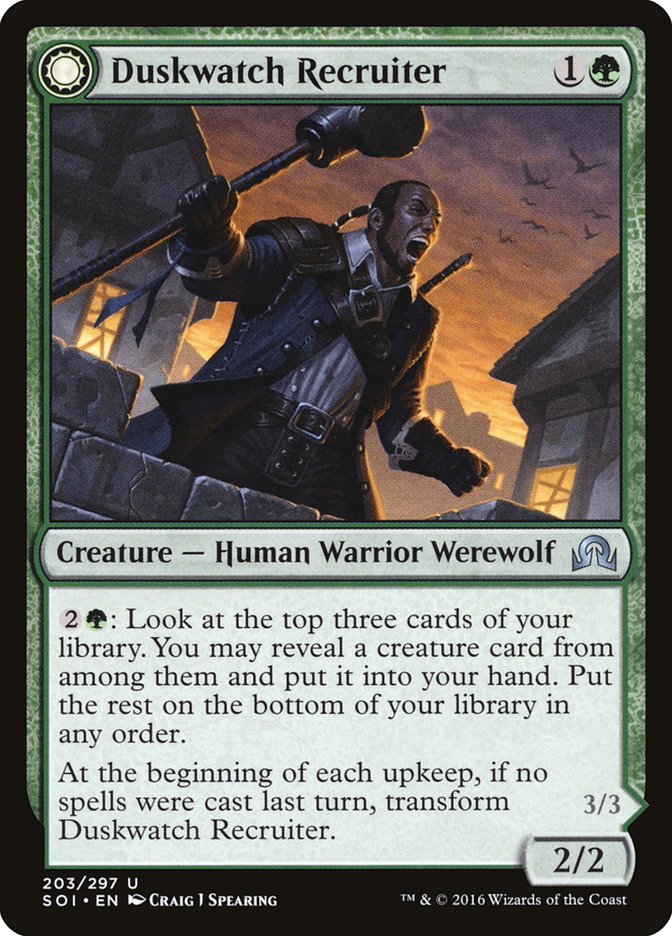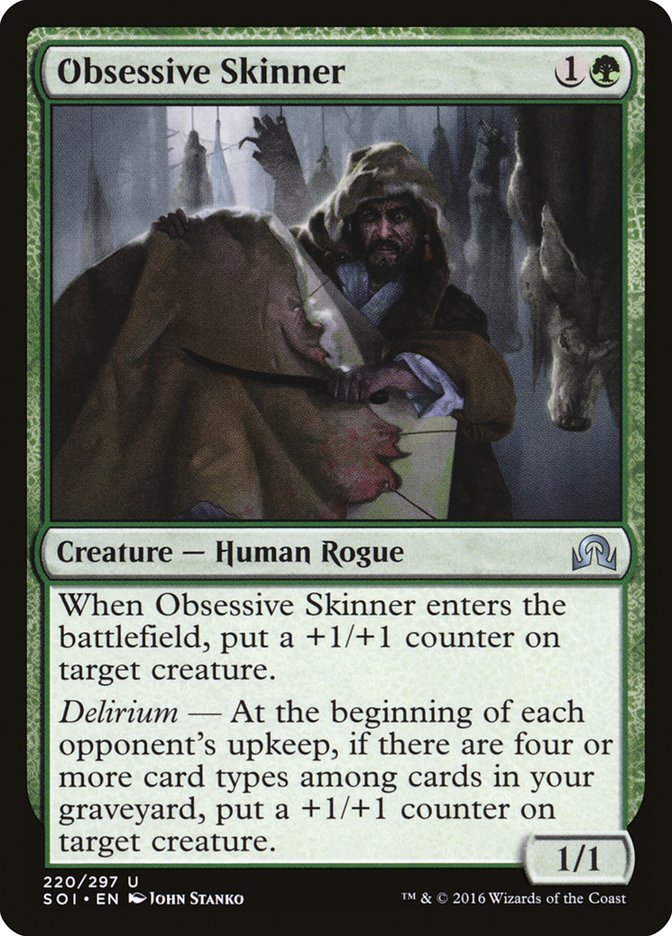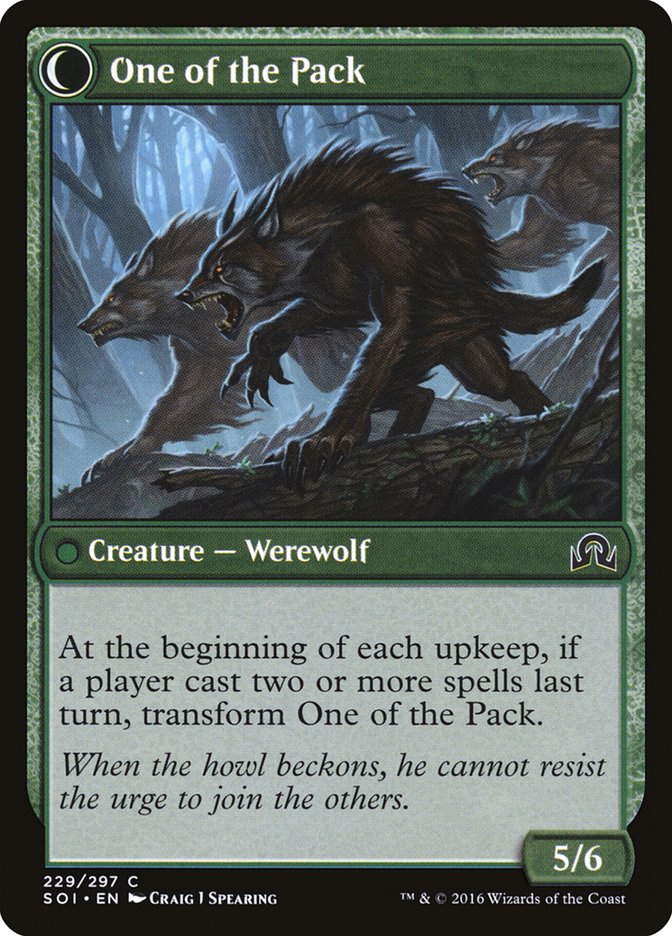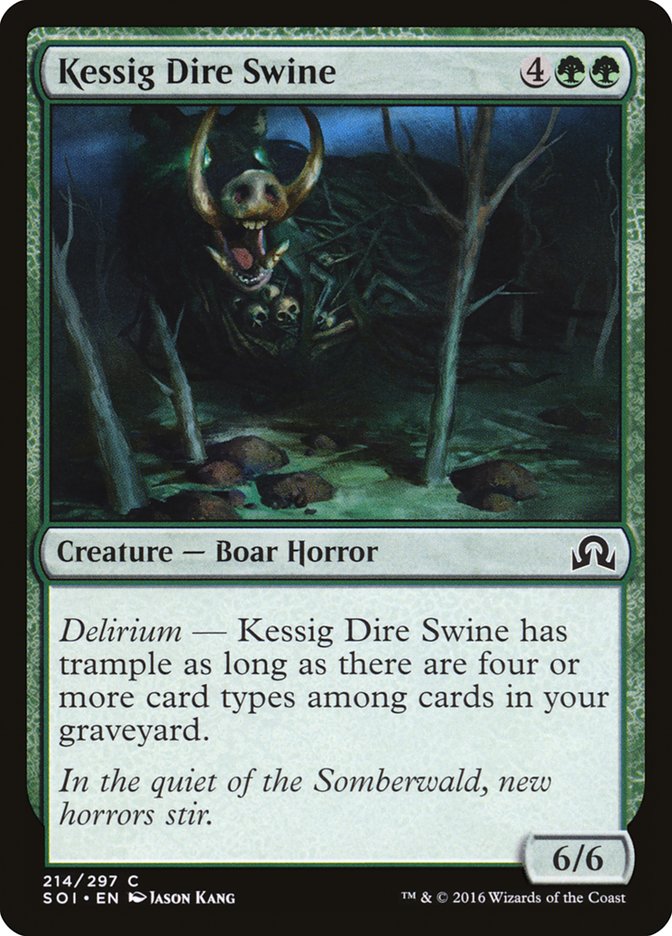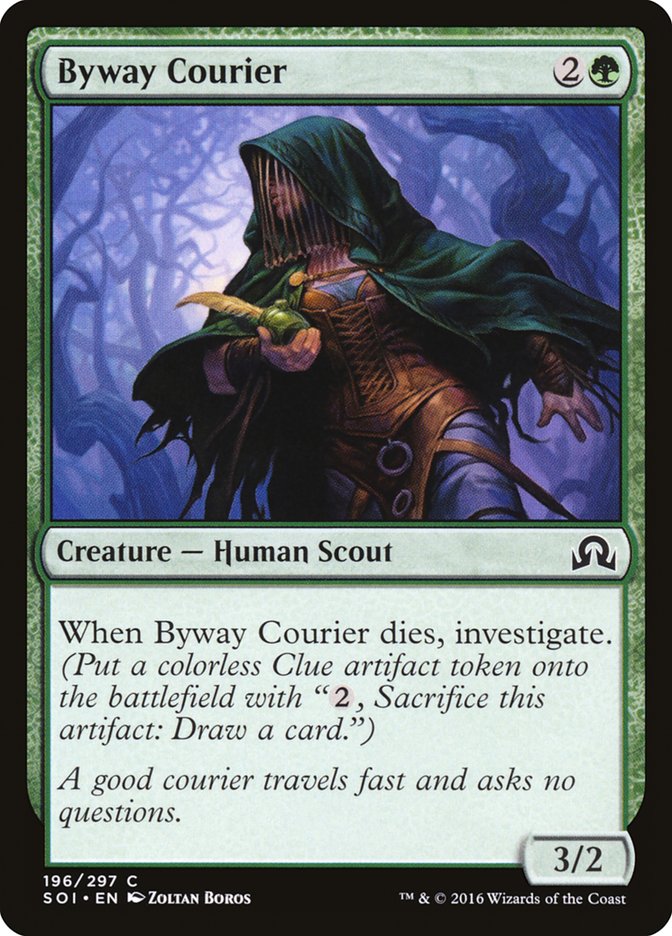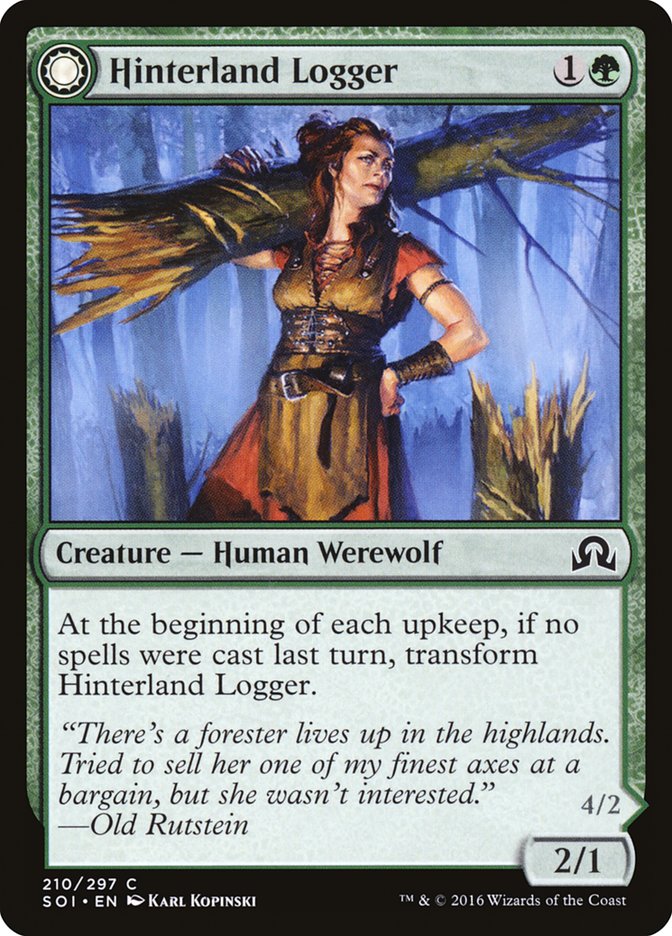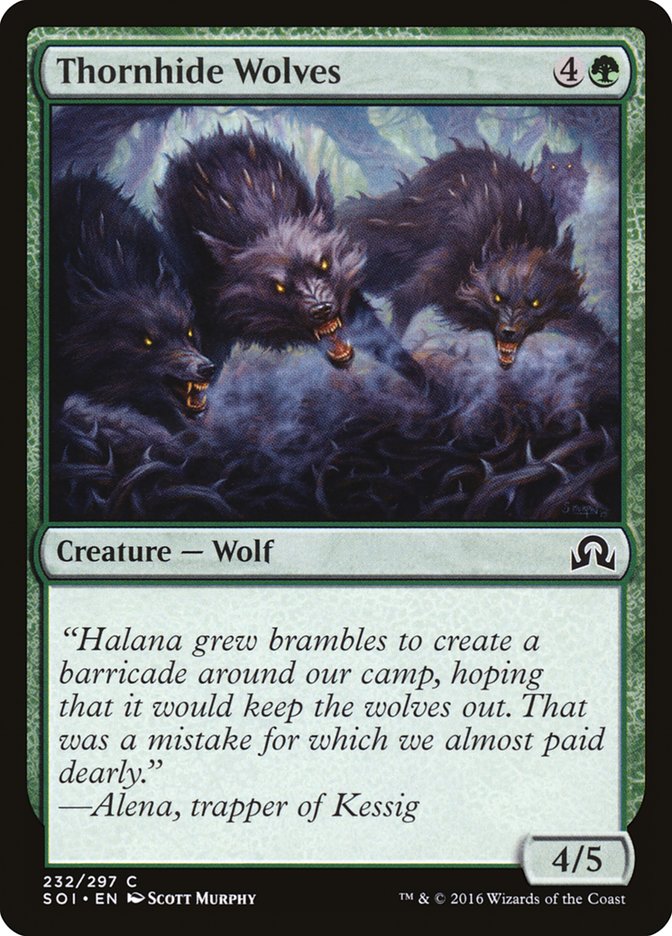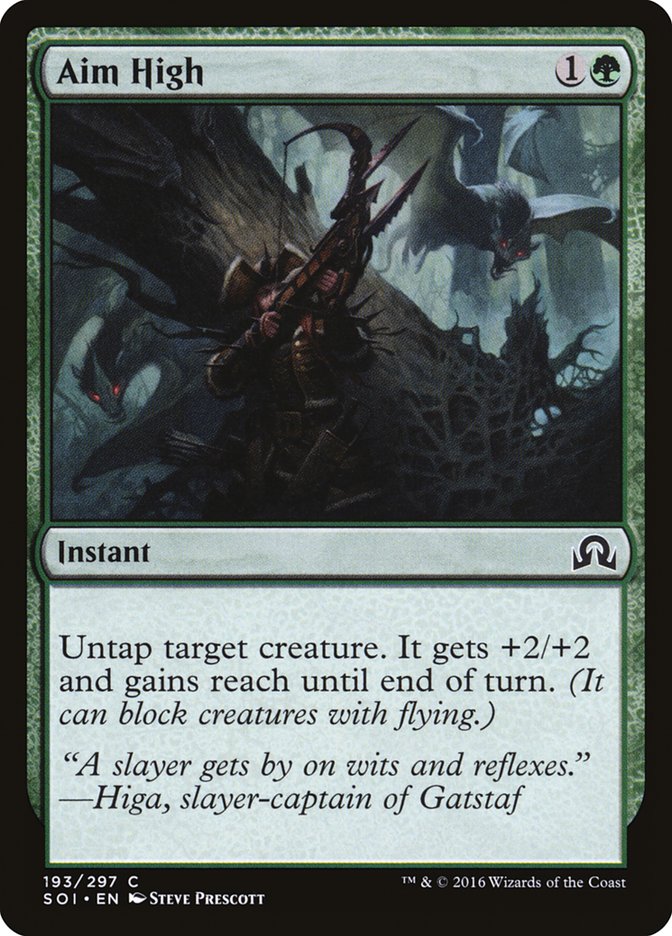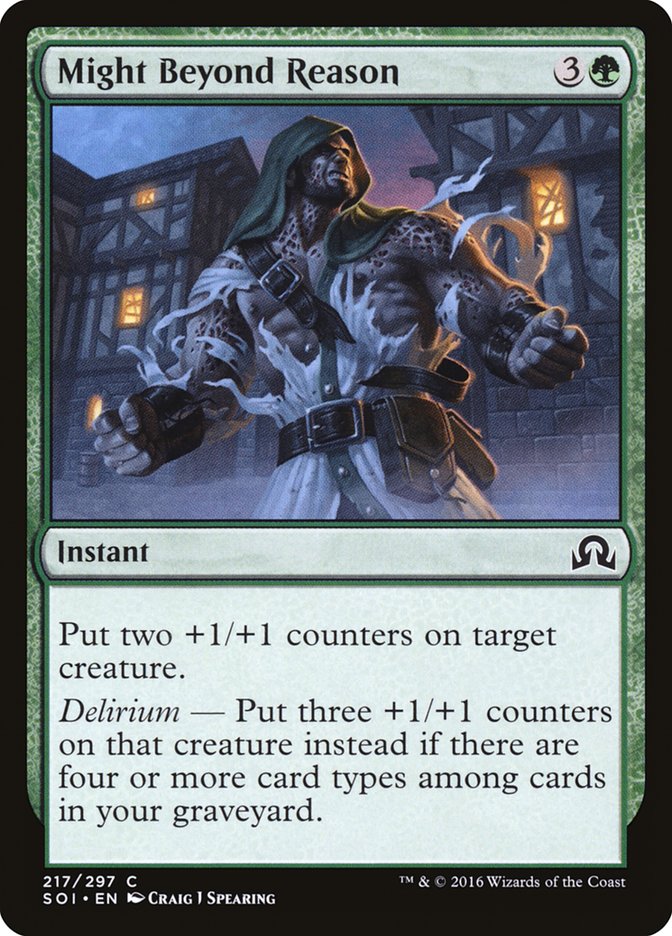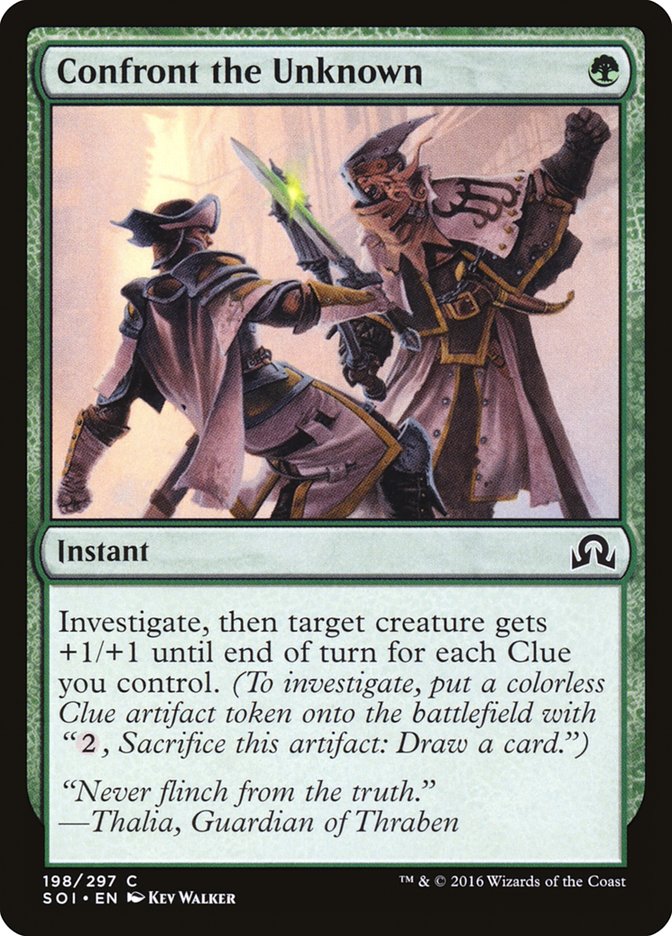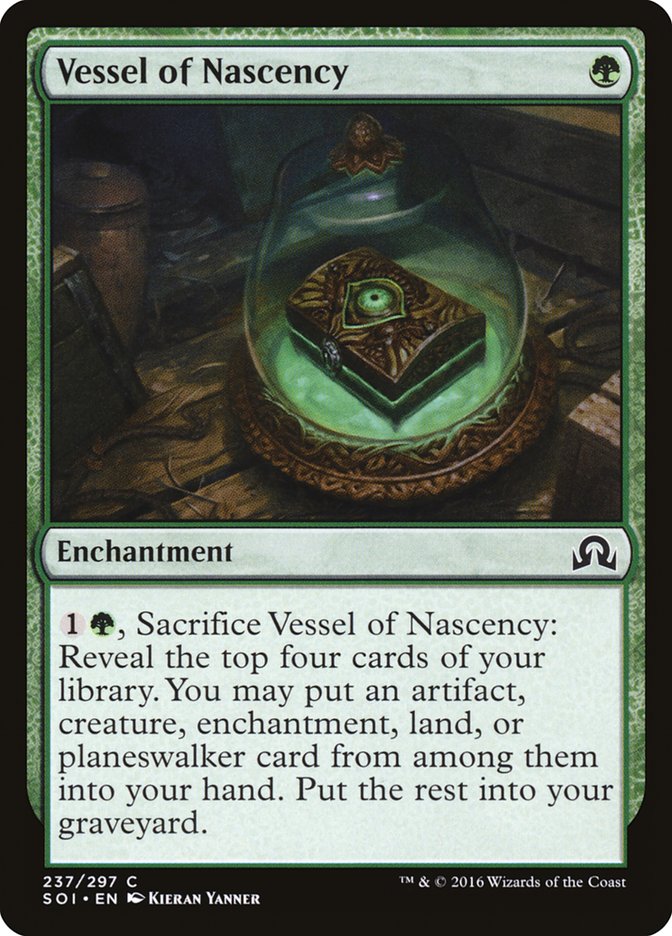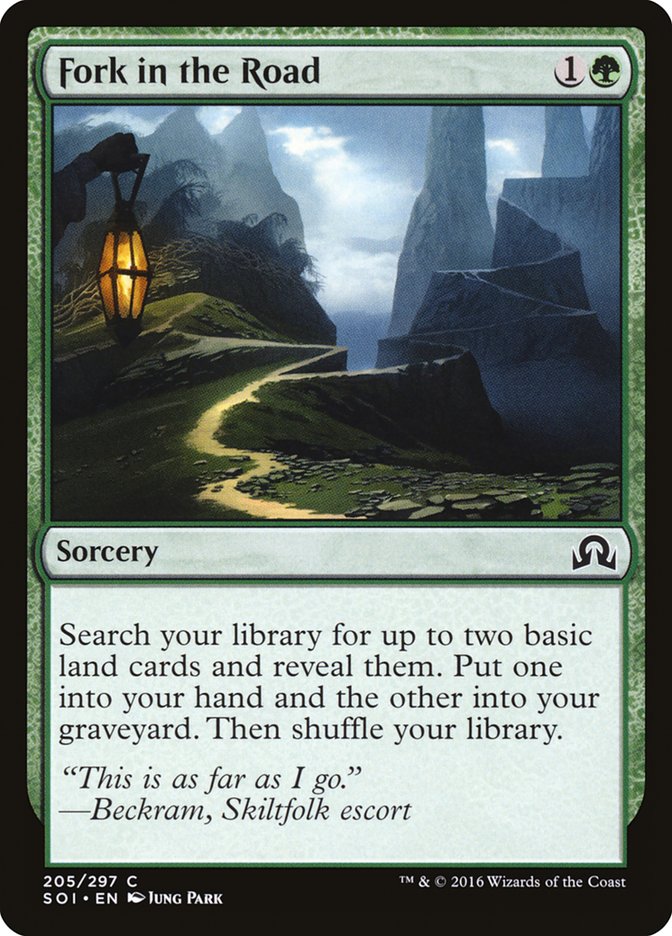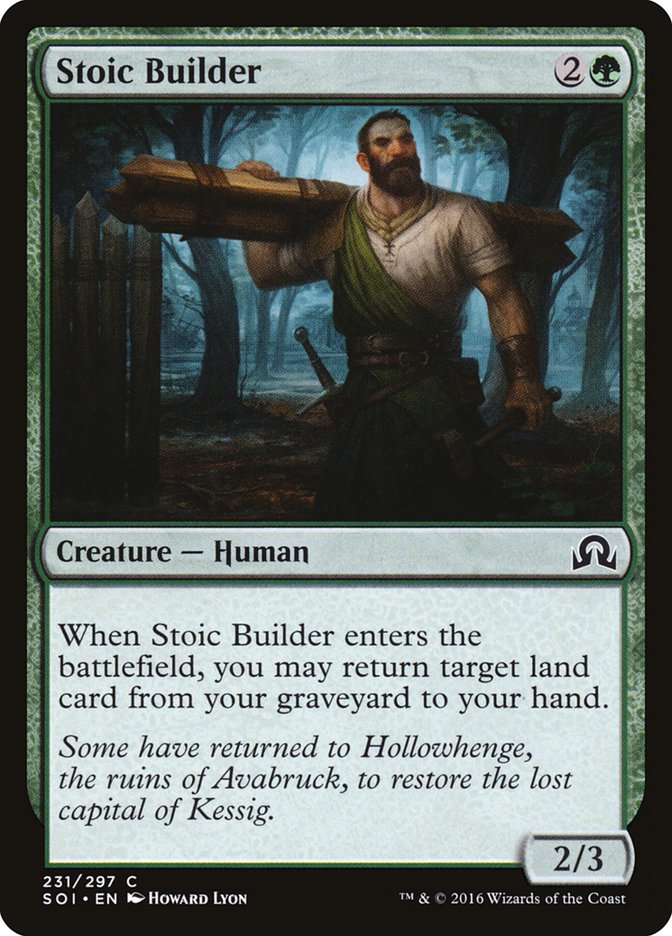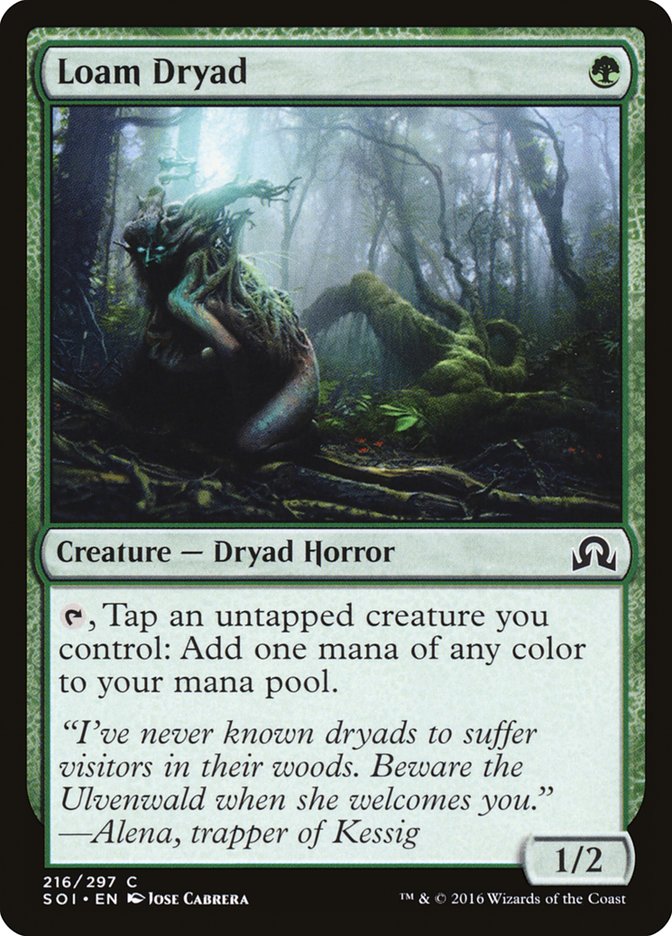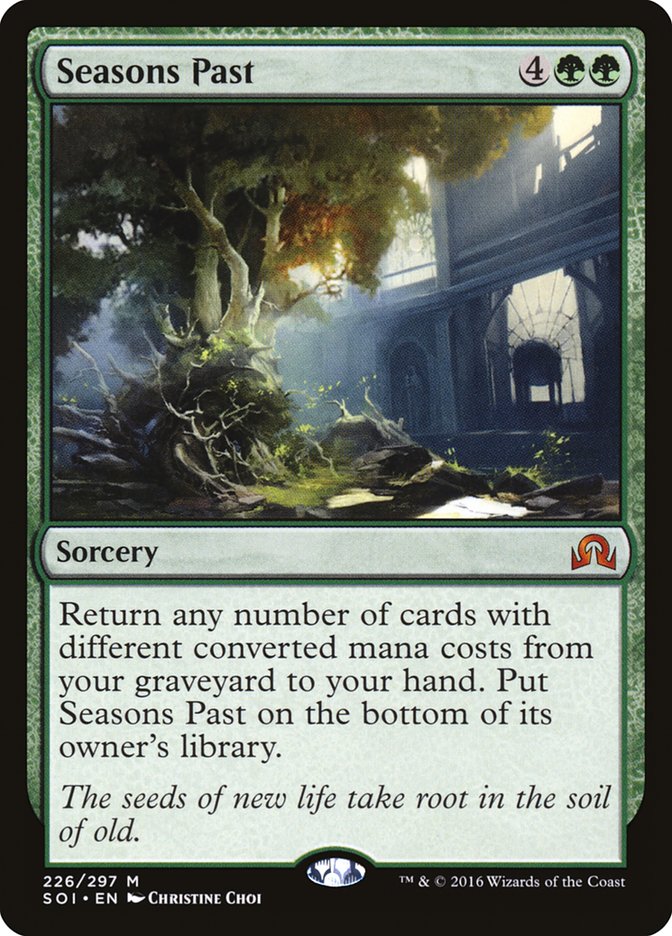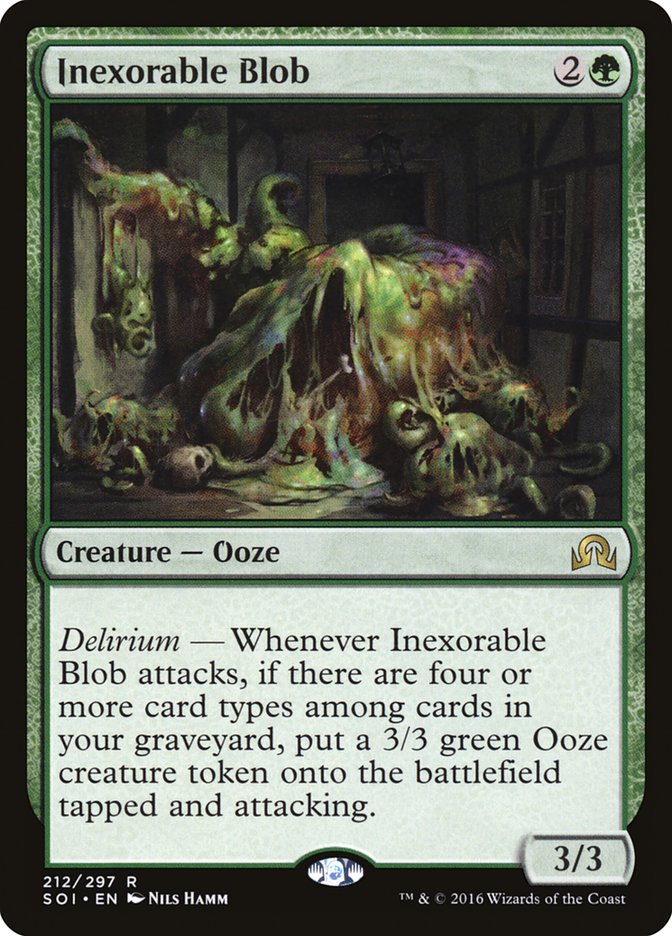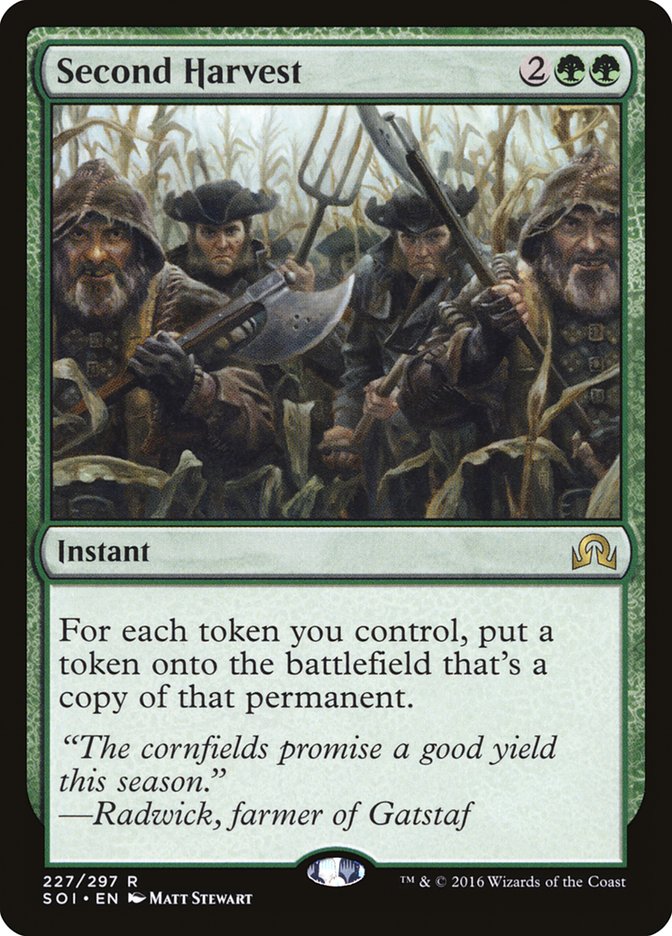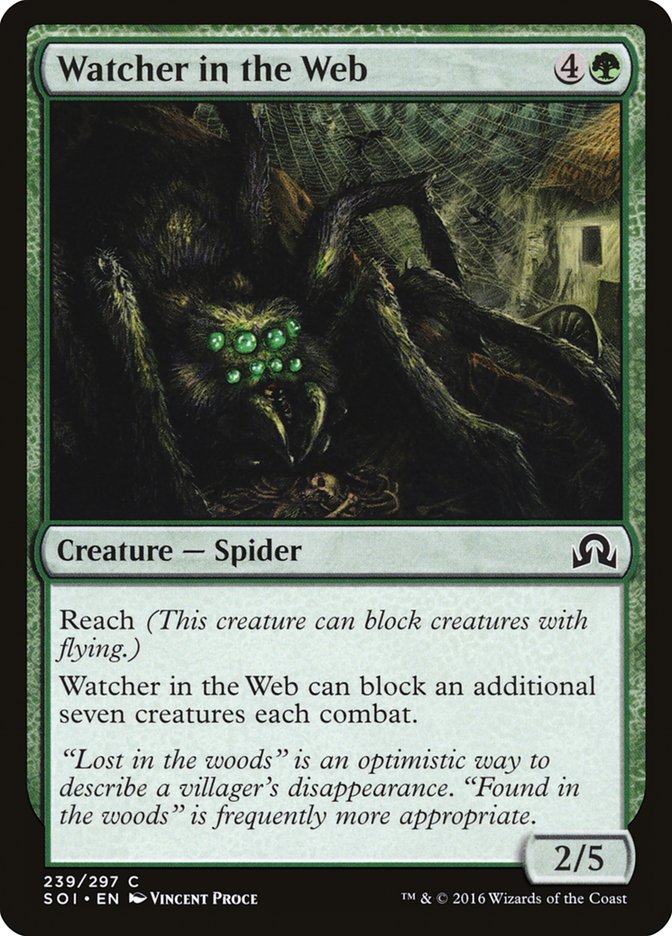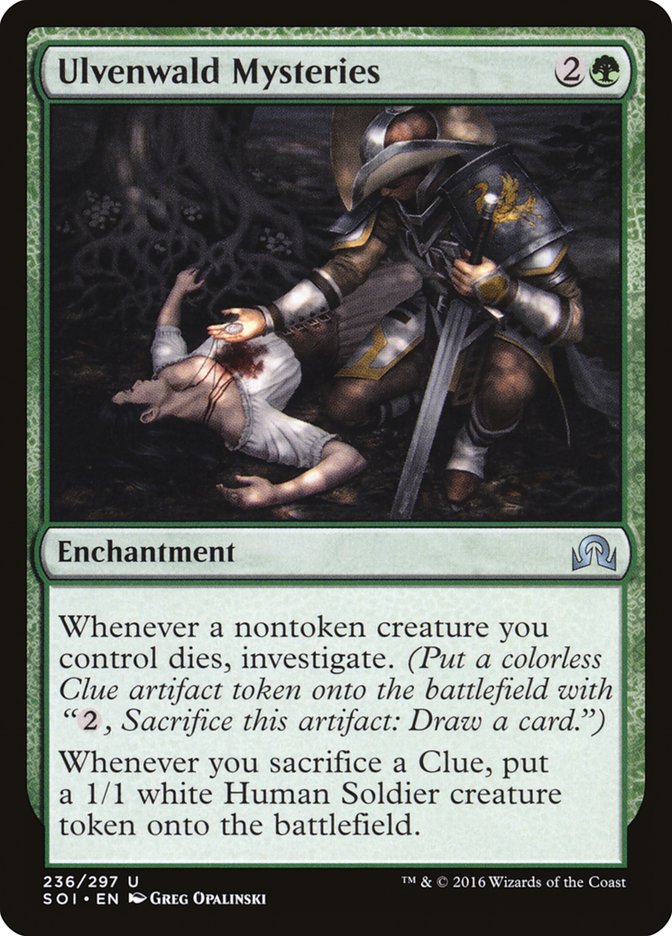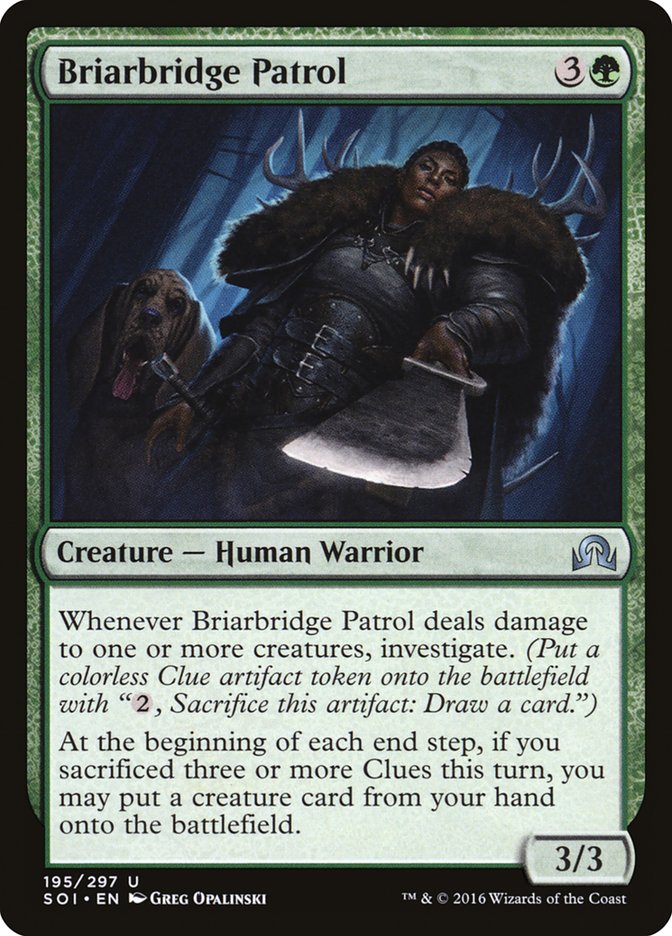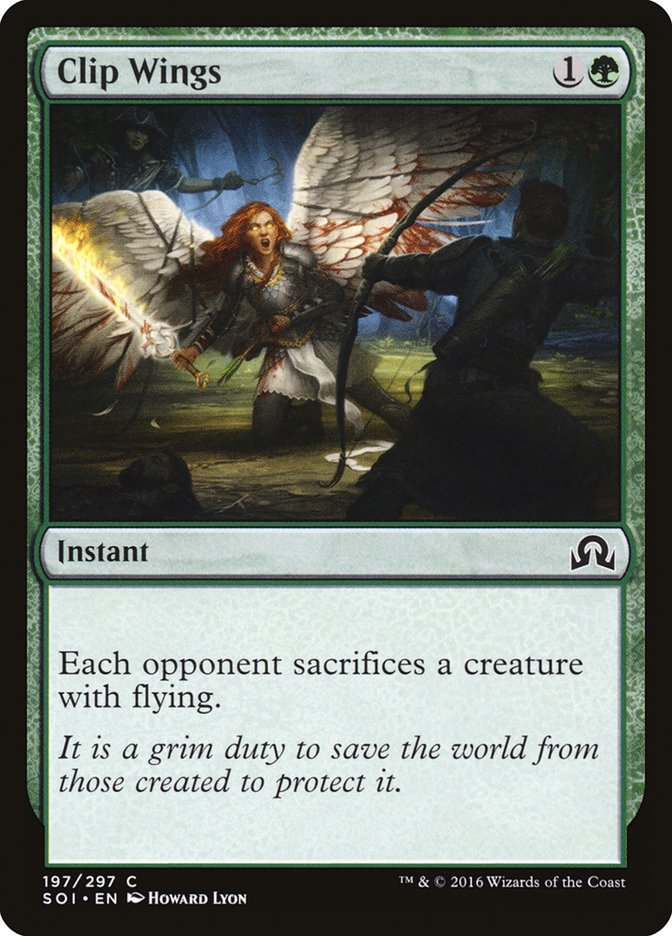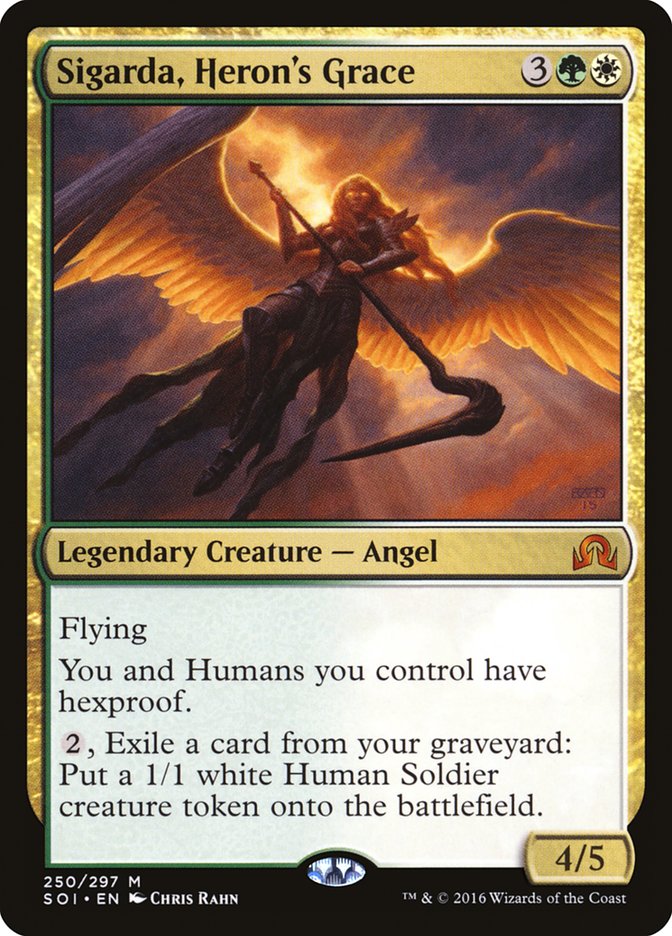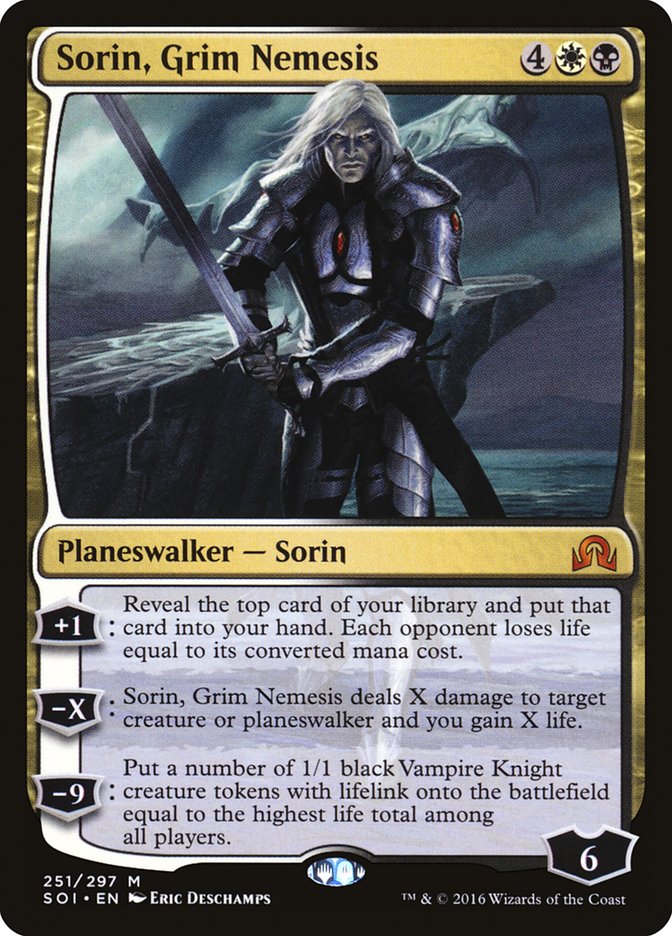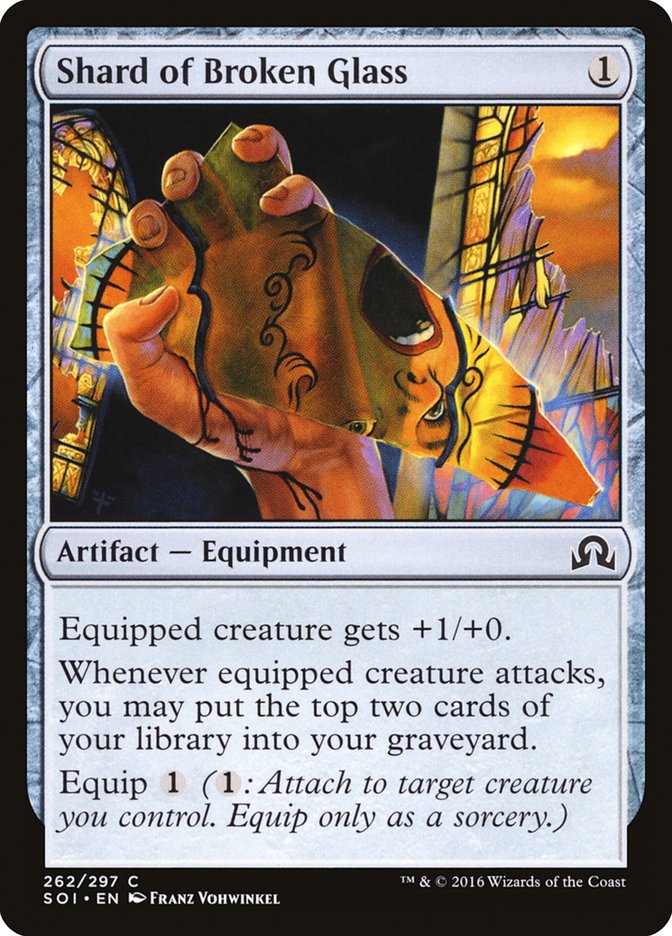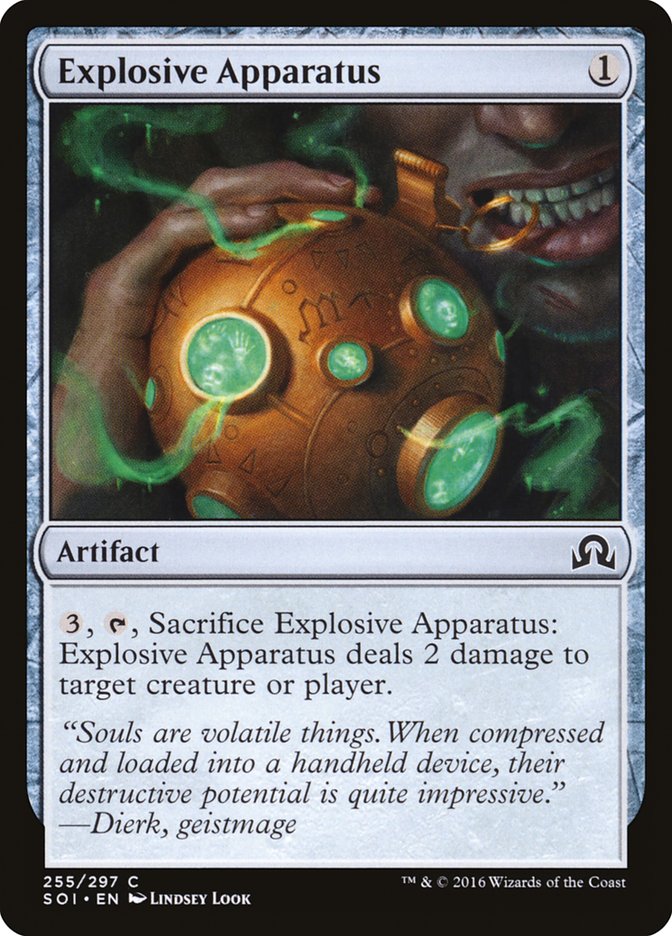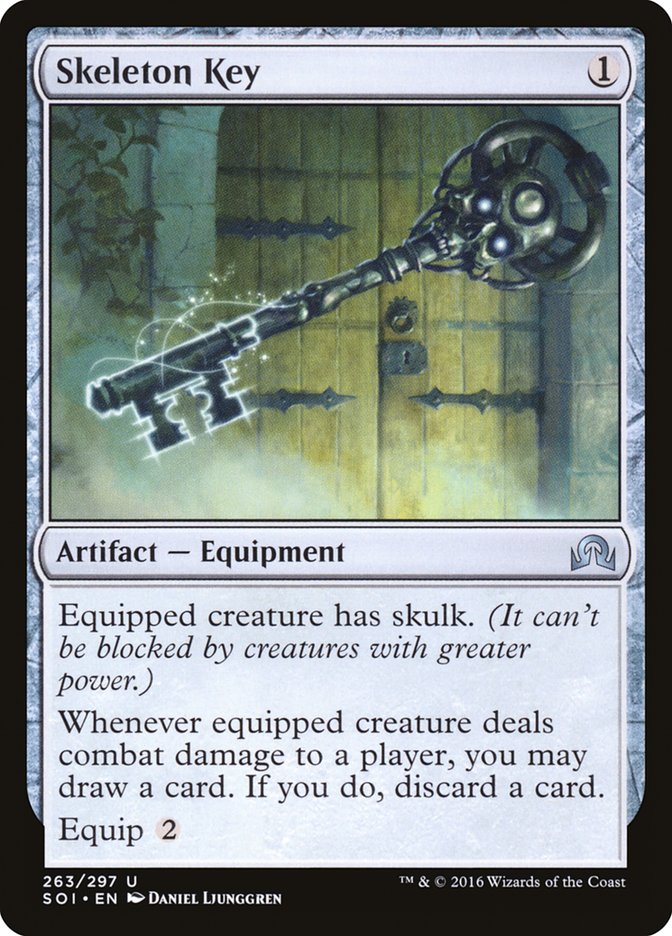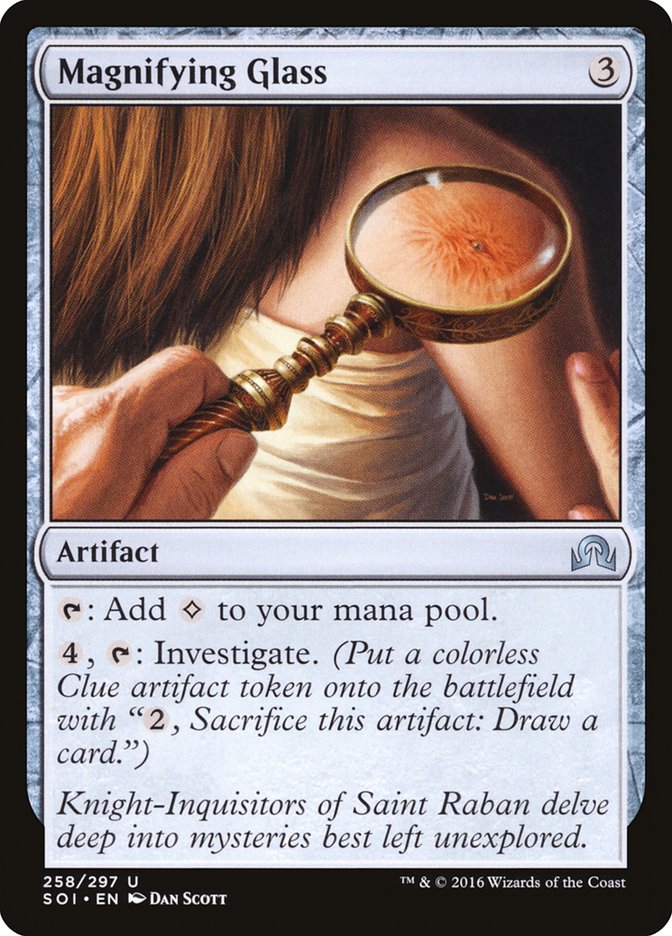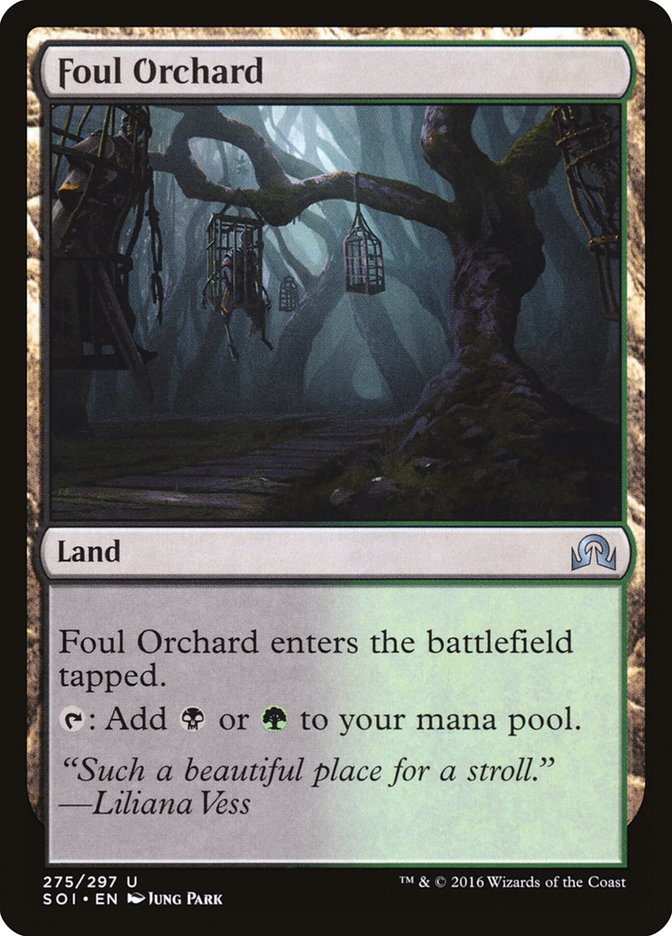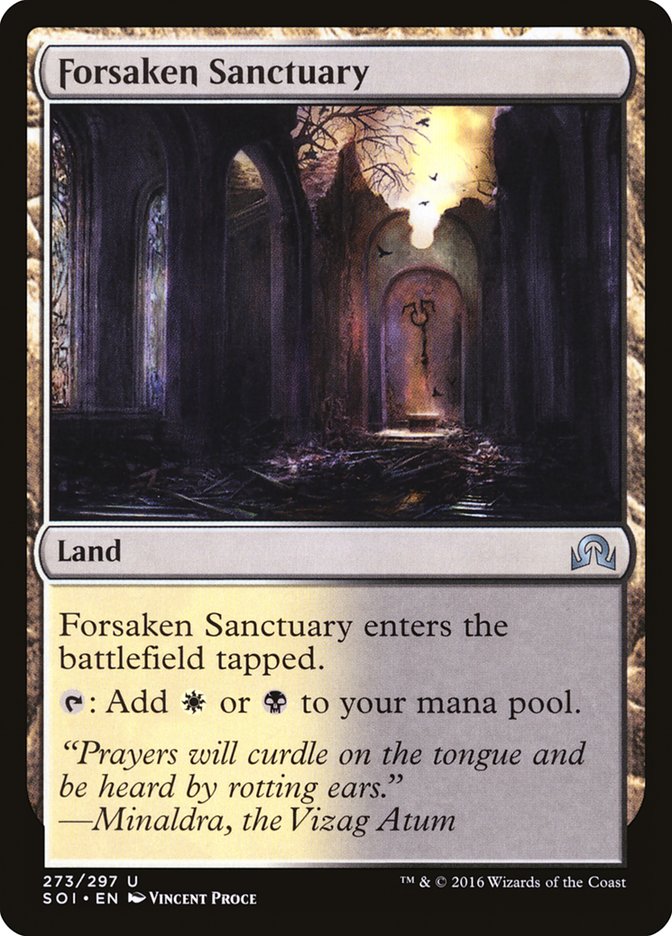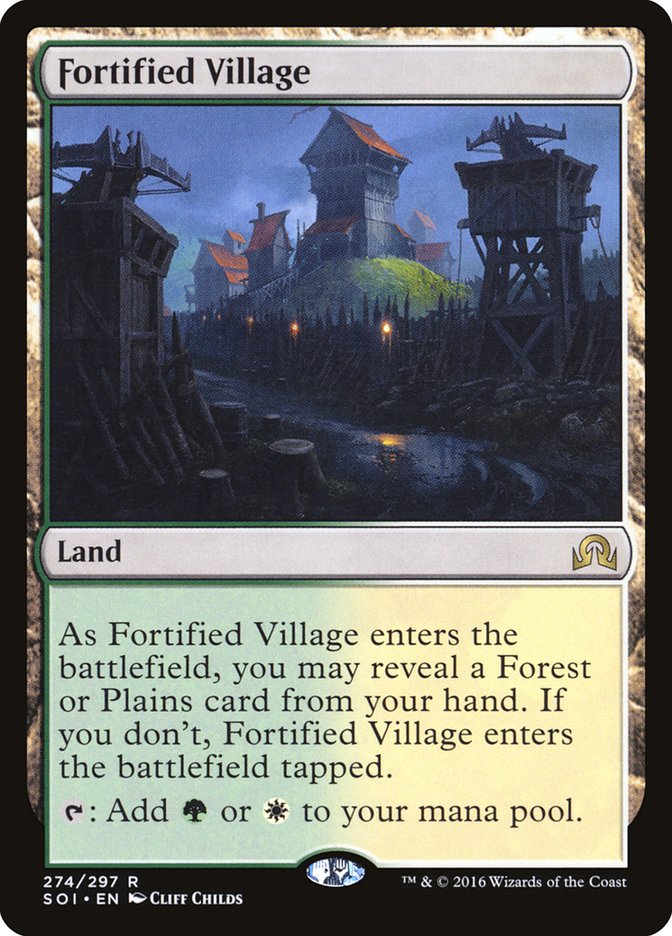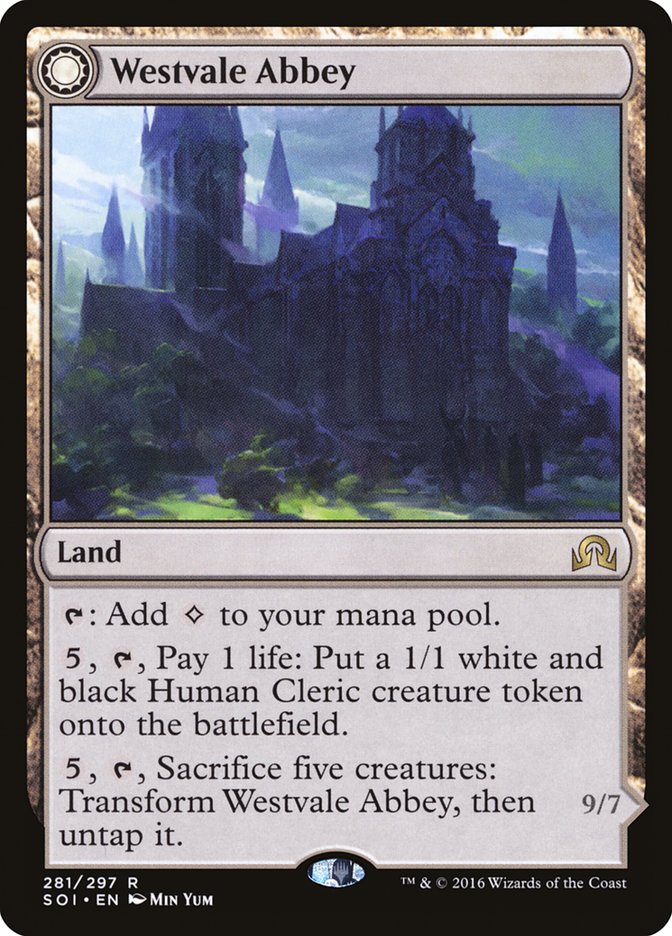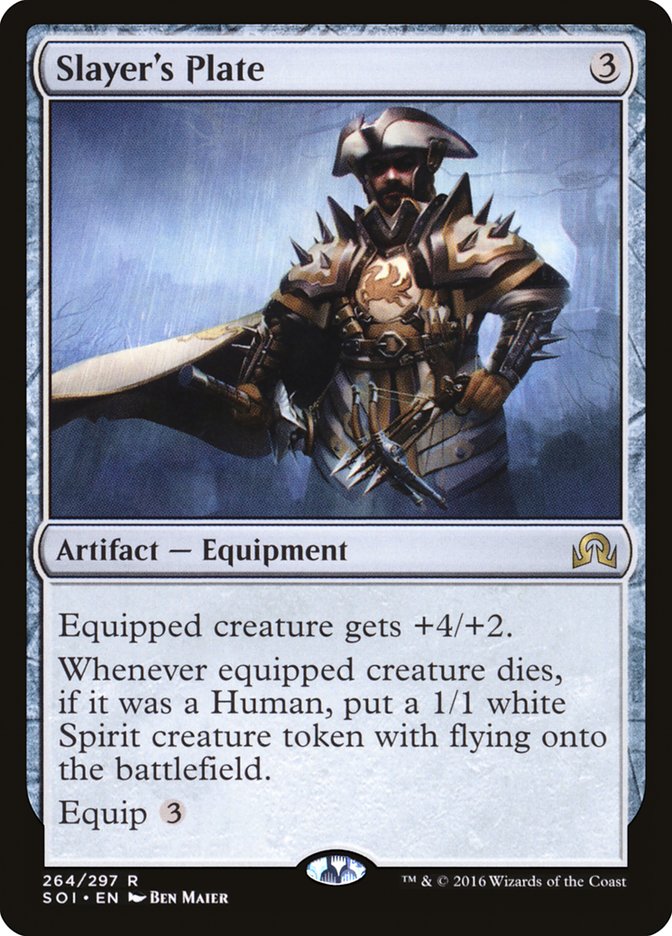Welcome back to First Pick at Shadows over Innistrad! You can find Part 1 here.
Red
Top Commons:
Obviously great card is obvious. It would be very good without madness and is absurd with it.
People forget how good a 3/3 for three is. I literally won a Grand Prix by taking Nessian Courser over a removal spell.
Top Uncommons:
A 3/3 for three is the second-best red common. That one has downside instead of multiple insane upsides.
See also: Reckless Scholar.
Nearly free, instant-speed, value-providing madness outlet. Also just a good removal spell.
Similar to blue, the next tier of red uncommons is also good. Red has lots of winners.
Curve and Sizing:
Most of the red creatures suck at blocking, so getting a game flipped on you early is easy. This is how Rakdos lost in Return to Ravnica draft. Don’t overload on this type of creature.
The mediocre two-drops play into this. Ember-Eye Wolf does not fight well early, and Sanguinary Mage is in an odd spot. Jeskai Student was never better than okay.
Red has enough other four-drops. I love Cobblebrute, but don’t play Hulking Devil if you have other options.
Spells:
Similar to white, the red tricks only win fights at parity, but they play downhill. You aren’t obligated to play these cards. Don’t play them if you aren’t attacking.
Mechanics:
Red has some value-style madness, but it also is bulky and promotes racing. That means getting one good madness trick blowout is often enough to push a game in your favor. Look for instant-speed madness outlets that enable this.
Rares:
Red has multiple X-damage spells at rare. One is Rolling Thunder. It has a Visara effect in Wolf of Devil’s Breach. It has multiple four-power flying Angels. Most of these aren’t double-faced cards. If an unknown rare is missing, it’s a soft signal against red.
Sleepers:
Pyre Hound with one trigger is sized well for the format. It is literally an archetype with Uncaged Fury. The ceiling is high and the minimum payoff is solid, though the floor is a bit low.
It is not safe to leave no blockers back. The threat of a common Blaze is going to change games.
Traps:
You will lose to this card once. Then it will never do anything again. Conditional and expensive do not make a good combo.
The best-case scenario is rarer than it looks. Most creatures forced to chump attack weren’t doing much, red is bad at blocking, and by the time you get paid, a 3/4 might be blank.
Summary:
Card-for-card red is the best color, but it plays poorly from behind. Lean heavily on your second color to shore up this weakness, especially as red will be initially overdrafted.
Unlike blue, getting trapped in red is unlikely. The low-quality cards are clear blanks and not blanks with “Draw a card.”
Green
Top Commons:
Rabid Bite is a top-three common. Fall of the Hammer is still very good at sorcery speed.
Turns out a 3/4 is huge in this format. A 5/6 is what they call huge-er.
Top Uncommons:
When I first saw this card, I assumed it flipped to nothing. I started laughing when I read the Werewolf side. This is the first Werewolf I’ve seen where your opponent wants to flip it for you because the alternative is worse. I look forward to turn 2 this, turn 2 activate plus flip, turn 4 cast a five-drop.
Another solid two-drop that runs away with the late-game.
Curve and Sizing:
Killing a six-toughness creature is hard in this format. Chump blocking is easier, but Kessig Dire Swine has built-in protection from that.
There is a weird tension in spending your mana in green. You want to use investigate, so high-cost cards are slightly worse. They also play worse when passing to flip a Werewolf, as you still have cards in hand, but at the same time, if you get an early flip, you want to have a five-drop instead of a three and a two. It is likely that some creatures that look playable turn out to be terrible due to playing poorly in common spots.
Spells:
These are the good combat tricks. They punch up a tier and create real blowouts.
The non-trick green spells are also very good. Green has real common payoffs for delirium and it has the enablers to match.
Mechanics:
Green decks can easily get delirium if they want. Take late delirium cards other people don’t want and play them.
Do not try to madness in green. Some value discard is fine as you can loop lands and investigate to refuel.
It’s hard to splash in nongreen decks, which means you can get some late pickups in the color. Look for hard removal like Sleep Paralysis and multicolored rares that come late.
Note that Werewolves play well with instants and flash creatures by letting you use mana on a turn you “didn’t cast a spell.” Red is in a similar spot, but I just wanted to point out the curve of four-drop Werewolf into good flash five-drop.
Rares:
Green has a similar even rare spread to blue: even quantities great, good, okay, and bad. I will note that Inexorable Blob is close to a Nessian Courser as it’s hard to get delirium in time for a 3/3 to be combat-worthu, and I really like Seasons Past as it is a one-card deck.
Sleepers:
This card is a disaster for multiple archetypes by handling multiple Spirit tokens.
This is a one-card engine, not a do-nothing. Creature dies, get double value on your mana, find another creature to have die.
Traps:
Basically a Hill Giant version of Byway Courier. This won’t usually survive multiple combats.
There are too many Spirit tokens. Only good against red rare Angels.
Summary:
Green just makes life easy. The delirium enablers are good and obvious. The creatures are good on size. The color is deep and can survive a fight, if the double-faced Werewolves didn’t tell you to stay away. When the “fight” spell and uncommons are good, green lives a nice life.
Other Cards
Multicolored:
I’m going to first-pick any multicolored planeswalker or legendary creature as the payoff is huge. I will take Altered Ego aggressively and Anguished Unmaking slightly less aggressively. The rest I’ll pass on until the draft is clearer. Invocation of Saint Traft is a huge trap. Would you first-pick Feast of the Unicorn?
Artifacts and Lands:
If I’m Humans, I want True-Faith Censer. If I’m delirium, I want Warped Landscape. I would rather not play Wicker Witch, Shard of Broken Glass (aka Bone Saw), or Explosive Apparatus without a big delirium payoff.
The uncommons are similarly replacement-level. Thraben Gargoyle plays well early and late and Skeleton Key is good, but I’ll leave the rest. Magnifying Glass is super-inefficient and not Seer’s Lantern. Harvest Hand is odd as most decks want the artifact creature to actually die and white has threes for days.
In Oath of the Gatewatch the duals were criminally underrated as splashing was easy. In this format splashing is hard and one dual won’t fix that. You will get passed the on-color one late.
I’m never passing Westvale Abbey, but there are a decent number of answers to Ormendahl, Profane Prince. If someone reveals this double-faced card, make sure to have a Clip Wings, Just the Wind, or similar effect.
I’m also unlikely to pass Slayer’s Plate. Werewolves are Humans too, and leaving a 1/1 Spirit is really leaving a 5/3 flier once it picks up the plate.
Overall
Keep it tight with your colors. There aren’t six-color lands like in Oath of the Gatewatch.
Creature sizing is all over. Just play the ones that are good at face value.
Creatures aren’t pushed. That means 3/3 fliers for five and 5/4s for five are better than in the past, and “aggro” is more big three- and four-drops curved out than three-power two-drops.
People will be skimping on creatures to fit spells for delirium. Creatures being worse helps this work.
There are a lot of moving pieces. You have to watch your card types in Draft, madness spells and enablers, remember all the madness spells as tricks, watch graveyards in-game, and remember Werewolf triggers. Don’t expect to get it all the first time around. This format isn’t Innistrad-layered, but it is complicated.


